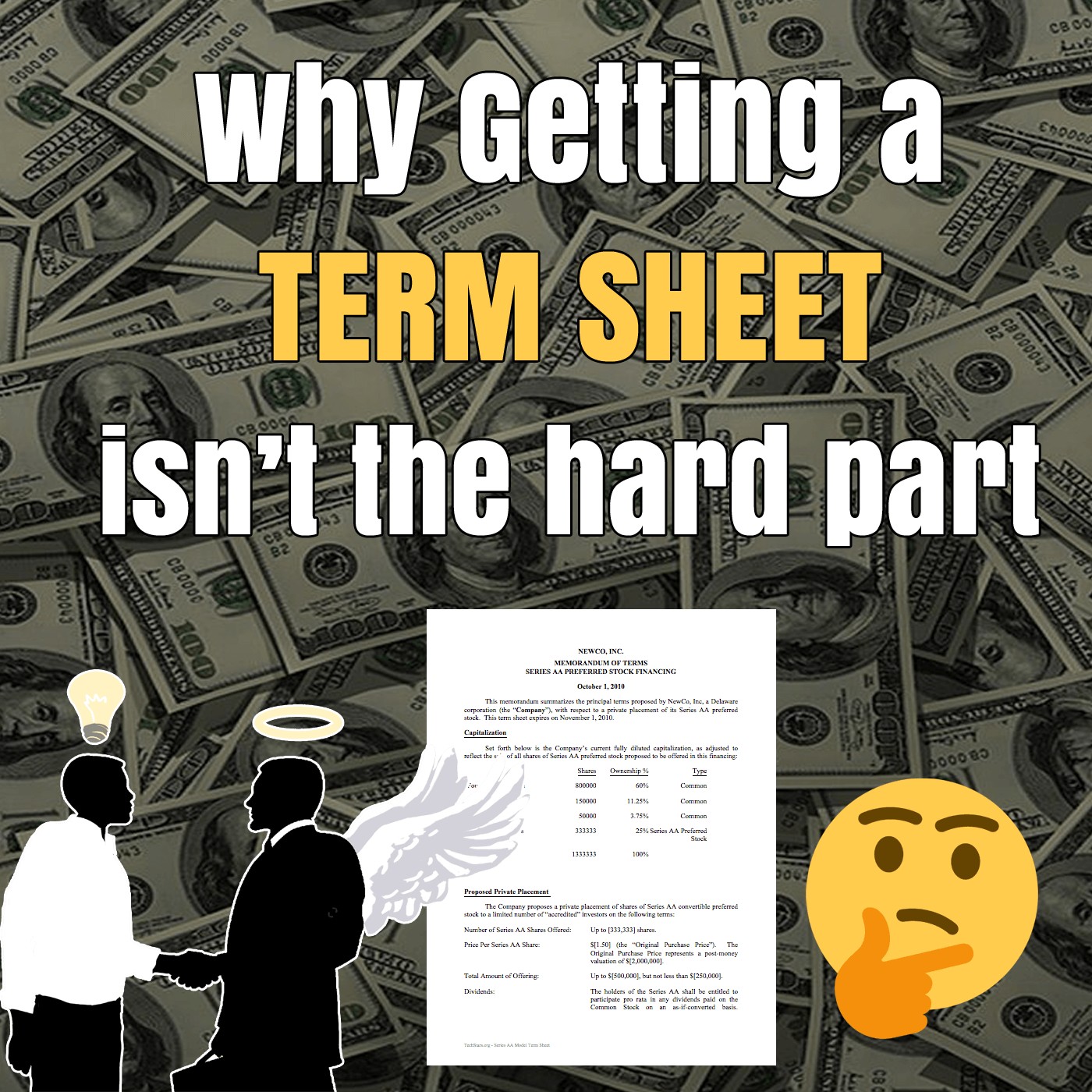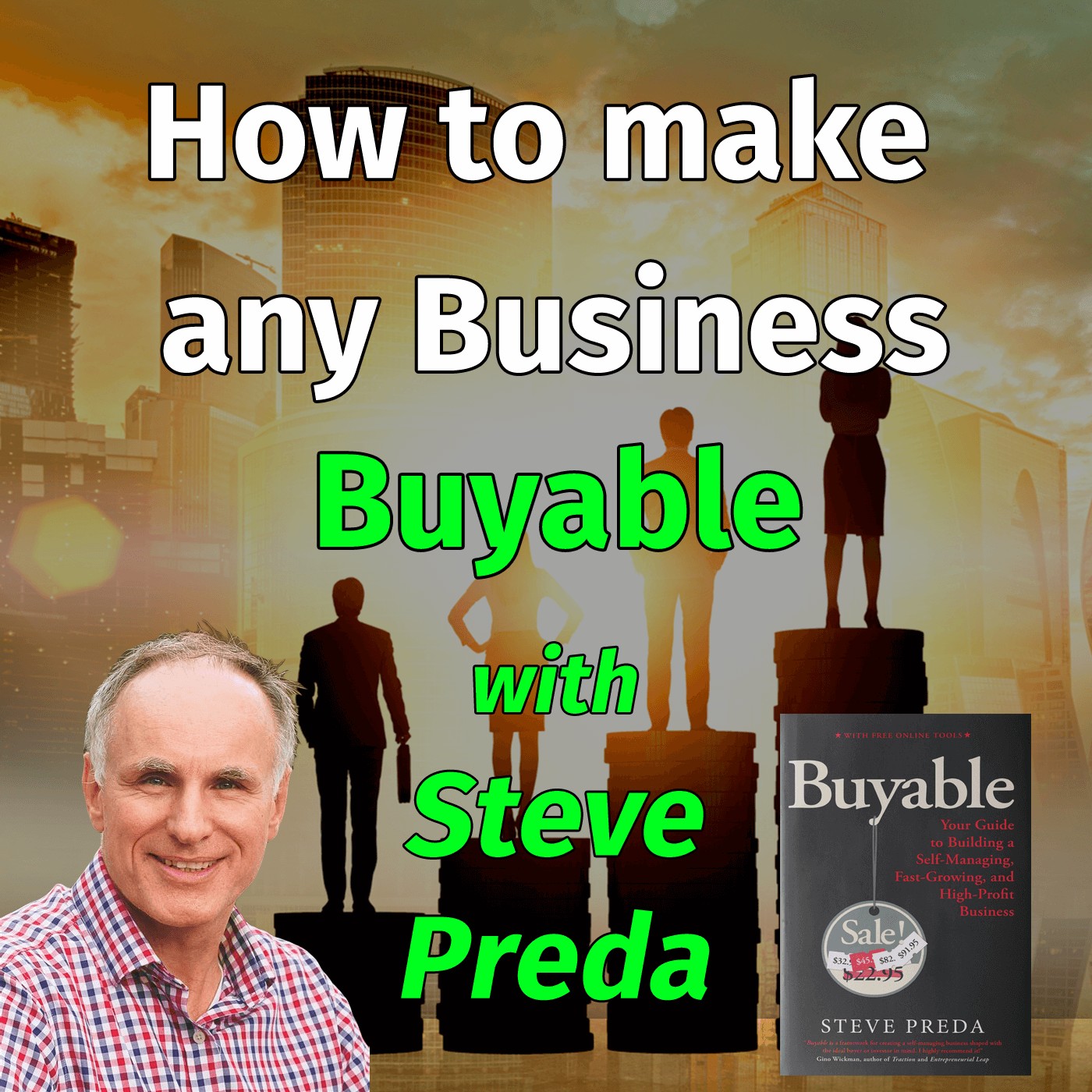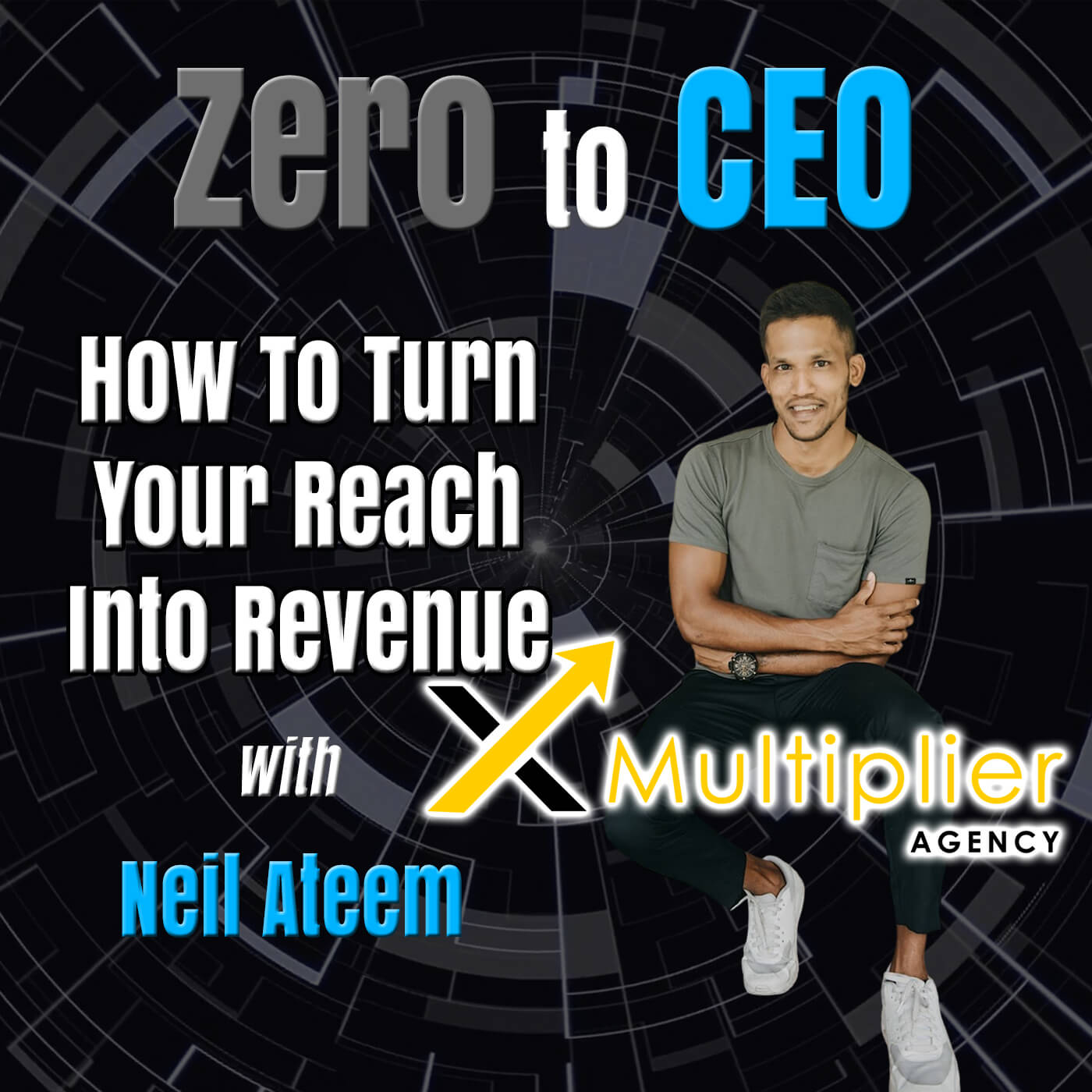Why getting a term sheet isn’t the hard part of raising money

In this episode I give you my thoughts on why getting a term sheet isn’t the hard part when it comes to raising money for your business. While it may be difficult to get a term sheet in the first place from investors, it’s even more challenging to raise the full amount in a term sheet if the investors aren’t putting up the entire round. Raising money is a big waste of time, and it can put a damper on the future progress of your business.
Listen to the Podcast episode here:
Or Watch the Video here:
Here’s the transcript from this podcast episode, please excuse any typos!
Today I’m going to discuss why getting a term sheet, investors, is not only very difficult to do. But why it’s difficult to raise money after you get a term sheet, because I can’t tell you how many times I was told by investors, no less, that getting a term sheet is really difficult. They’re the ones that are giving out the term sheets, but it’s true. Because getting a term sheet means that an investor believes in your idea, your company, your platform or product, and is willing to give you the terms that he or she is building to give you for the money they’re going to give you for your company in exchange for a percentage equity in your business. Now usually when an investor gives you a term sheet. The terms. And those terms usually benefit the investors, there’s a lot of things you’ll hear like right a first refusal and non dilution. Some teams raise their chairs or lessen, over time.
Refuse industries that you need to order the next round. So, these terms are investor friendly not founder friendly that’s just the way it is. And you have to ask yourself, is it worth it to even raise the money in the first place, to give up all that control. And if you’re one of the lucky ones to get a term sheet in your hands. This means that the investor who’s putting the money up for that term sheet, they’re going to be called the lead investor, they’re leading the round, which means they’re going to probably put up a portion or percentage of the amount you’re raising to make this simple let’s say you’re raising $500,000 out of that $500,000 The investor commits half. So $250,000 is committed by this investor or investor group, whether it’s an angel or VC, and this means you have to raise the other half of the round. In order to fulfill the whole, the whole deal, the whole rent. This isn’t always the case.
A lot of times investors give you a term sheet, they’ll give you the full $500,000 for a percentage of your business as well as a seat on your board of directors, maybe more than one seat. The one advisory shares, potentially, there’s a lot of different things that go along with raising money, but let’s just say you have to raise the rest of the money in the round. Okay the investor commits to $50,000, you have to raise it to half. Now you have to shop around your idea, your, your pitch deck. The term sheet, the fact that you have a term sheet and that you’re looking to fill around, and this might take you six months, I mean it could take you a year to fill the route it can potentially take you a long time to fill that round, which is very time consuming, when you could be working on your product, your platform improvements, right, customer acquisition, selling your product or getting more users to come to your platform, etc. Now I’ve been in this situation before. And it’s kind of a state of limbo where you’re kind of floating in between funded and not funded right and you have to kind of balance it’s a balancing act, you have to not only work on the business and continue to operate as a CEO or whatever your title is, but you have to also pitch investors and travel to meetings, and it’s very exhausting it’s very time consuming, you have to keep pitching the same story over and over again. Of course you might want to tweak it depending on who your audience is. But it’s really tough because you’re now splitting between two jobs, being the CEO of your business, or the owner of your business and fundraising, which is a full time job in and of itself. And during this period of fundraising, most investors are going to do what’s called due diligence. They want to investigate your business inside and out. All the founders don’t want to have interviews with you, your VP of marketing, your CTO, your CFO, everybody who’s involved in the core business. They’re going to want to interview them one by one, and ask them a lot of questions and the answers have to align perfectly.
You can’t have, you know, one person saying Why is her and one person saying another, if the vision is not perfectly clear across the board, the investor is going to see that there’s a lack of communication in your organization, and they’re probably gonna think that you’re not a good investable business because you guys are all over the place you have to be on the same page so it’s very important that you and your co founders, your employees anybody who’s going to be in charge of business decisions is on the same page to practice answering questions that industries are going to ask you, most of the time, in order to properly make sure that you’re on top of things, investors are going to want what I call the 40s which is in my book and my course if you’ve taken it you’ve heard of it. It’s a good team, which means you have really good people behind the product that are building everything. And speaking of products that will be the second tier which is the technology behind your business whether it’s a product or a service or a website or an app.
The technology has to be spot on. I mean, this thing has to work perfectly, no crashes, if there’s a crash it has to be minimal, you have to be working on it. They want to see that you can build a really good product with a good team. Right. And then the third T is that they want to see that those two pieces have turned into traction, right, you have people coming to use your website or your app, or people are buying your product, and their money is simply fuel for the fire, they’re just throwing money on a fire, it’s gonna be burning it and scaling it and making it much bigger because you’ve already built a successful product, they’re just helping you make it bigger. And speaking of throwing money into the fire, that’s the fourth t which I call turning a profit or revenue maximization. They want to see that you’re earning revenue, so that their money is not going towards figuring that out. One of the things people always forget when running a startup or a business is, if you’re raising money, investors, their number one goal is to make money, so they want to mitigate the risk of putting money into a company that hasn’t proven out their concept yet. And that goes without saying. You have to already have proven it out, identified a market already have traction, technology and team, like I said, and then turning a profit if you can show them that you’re earning some money, they can see projections that aren’t complete BS that hey we earned $5,000 Last month, with your investment, we can get up to $50,000 a month. Okay, now they are interested because their $500,000 can be earned back in just 10 months, but let’s go back for a second to the actual term sheet. Okay.
Again, if you’re lucky enough to get one because most entrepreneurs do not get a term sheet their startups fail before they’re able to get one or they don’t have 40s So investors pass them over, and so on and so forth. If you’re lucky enough to get one that does not mean that you got funding, and you’re ready to go, because I’ve actually gotten a term sheet in the past where I was raising around and about halfway through raising the round one of the investors backed out at the last second, which caused other investors to also back out. And the reason he was pretty silly. In my opinion, and that’s the, that’s the problem right you never know why an investor is going to pass on your business. And if they do, the term sheet then has a time limit. And if it crumbles and falls away or if the term sheet ends a time limit ends, well then you’re you’re so well right, you no longer get to raise that round and you’re back to square one. Not only that you waste all that time fundraising, where you could have been building up your business even more, but now you have all these investors who you are pitching, and now they’re not interested anymore, so now you have to go start over again or look for other investors, it’s very time consuming. So my suggestion to you is this, before you plan on fundraising or talking to investors. And by the way, I’ve seen countless entrepreneurs pitch investors before they had the 40s, make sure you have the 40s. I can’t stress this enough. If you have that, it’s the difference between an investor saying yes and no. Because if they see that you’ve put in the work, your team is amazing, or technology works fine, you attract people who are jumping on and using your platform or buying your product, you’re earning revenue.
There’s nothing left for them to risk, you’ve done the red, you’ve mitigated the risk for them, you’ve made it so that they cannot lose their money. For the most part, there’s always a chance of course but if you’re thriving before they give you funding. All you’re doing is one thing, scaling, growing bigger growing, and that’s all they want, they just want to be you know a lot of these people out there say that investors invest in seed rounds or, you know, early stage startups, it’s just not what I haven’t been able to find that in the years that I’ve been fundraising and talking to investors and 1000s of investors I’ve talked to, more often than not, they will not give you $250,000 or $500,000 in an early stage, or seed round which means you have to figure out those four T’s right they don’t they don’t do that. They that’s afterward, it’s just, they want to see the data they want to see the revenue they want to see all of it right and if they don’t see it, they’re not going to invest so hopefully this helps you understand what a term sheet is how it benefits the investor, why you might need to raise money and look through one of these term sheets and don’t forget to get a lawyer to look over the terms to make sure that you’re not screwing yourself. And, you know, don’t forget the 4 Ts, the 4 Ts are very important before you raise any money or you go after investors, make sure you have team technology traction and turning a profit.
![]()






